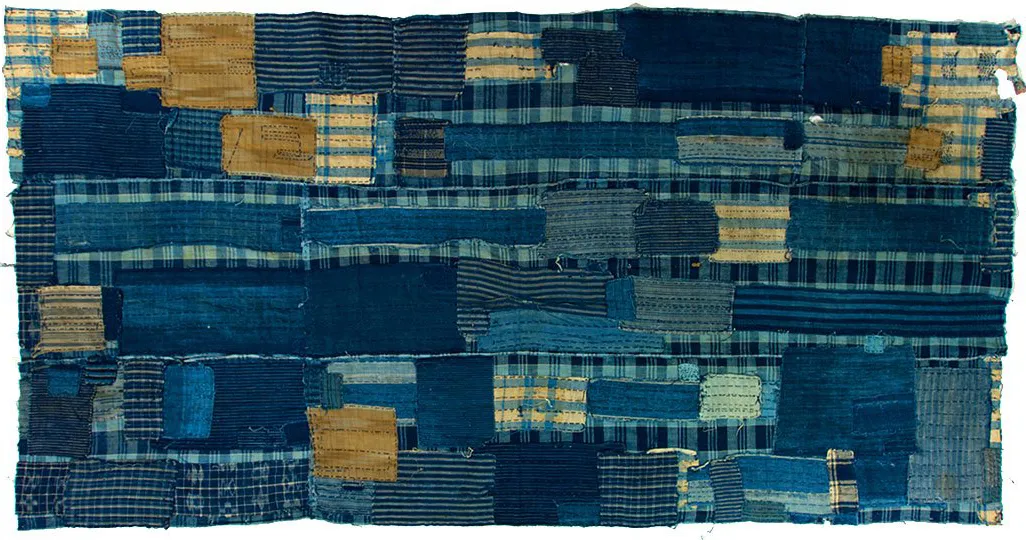I am going to make a traditional boro style denim tapestry. Created by low class Japanese citizens in the mid 1800s, boro denim is the art of repairing denim by patching new sections on. Boro style denim can also be created by sewing many different sections of fabric together. It utilizes striped patches to contrast with the darkness of the denim which emphasizes its arts and crafts style.

I was first introduced to boro style denim through Japanese brands like Kapital and Needles. These new age brands combine many different types of fabric in their clothes and are known for using abstract and unique stitching.
On the left is a pair of boro constructed patchwork jeans from Kapital. Here you can see many sections of different materials that contrast with the light denim the majority of the pants are constructed out of. The image in the middle is also another example from Kapital that gives a detailed view of how the material is patched. This shows how embroidery is a theme for boro style denim with the Kapital logo very prominent in yellow. The image on the right is a flannel made by Needles, while it is not particularly made in the boro style, you can see the influence with many different materials being used and contrast stitching.

This is an example of classic boro denim on a kimono. This style of kimono was most likely made by the lower class and repaired many times. Traditionally kimonos were made out of silk in valuable colors like red and purple for the high class Japanese imperials. Over time Japan began trading with India which allowed them to get access to Indian cotton. Indian cotton revolutionized the kimono market with striped and checkered patterns, opening the society’s mind to kimonos made from alternate materials than silk. Japan became a large market for denim products, where arts and crafts aesthetics lead to the development of techniques such as boro and sashiko stitching.
Citations:
“shaskio stitching boro patchwork” International Quilt Study Centre, University of Nebraska-Lincoln, 2009
“KAPITAL 12.5OZ DENIM 5P RAT FLARE PANTS” Haruyama, 2022
“Kapital Smiley Face” Pinterest, 2022
“RIBBON CUTS FLANNEL SHIRT” HBX, 2022
“Traditional boro kimono” Gerrie Congdon, 2017





3 Comments. Leave new
I haven’t heard of boro before but seems to be an interesting aesthetic. Just out of curiosity have you worn any before, how does it feel? Just curious because it has so many seems. Also how did you source the denim? I have some torn jeans laying around but it seems like you would require a lot to make a tapestry.
This is really cool! I’d never heard of Boro before but it’s interesting to see how it’s evolved from an economic necessity into an aesthetic. Do Kapital and Needles start with used clothing or do they distress new clothing to achieve this look? Either way, what do you think that means for the aesthetic they intend to achieve? Also, out of curiosity, where are you getting your denim from?
I’m not certain if Kapital or Needles start with used clothing as it definitely depends on the piece. An example of a brand that starts with used clothing is Gallery Department or Chrome Hearts, these brands use vintage Levis as the starting point for many pieces. I would say that Kapital and Needles are going for a vintage look in Japanese Americana. I have been planning this project for a while and have collected large jeans that I like the color of, which I am going to cut up and sew together. I’m also planning on using some flannel material as well.